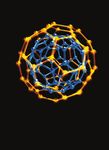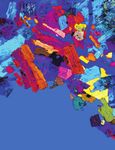A Lateral Unconfined Swelling Test for Swelling Rocks
←
→
Page content transcription
If your browser does not render page correctly, please read the page content below
Hindawi
Advances in Materials Science and Engineering
Volume 2018, Article ID 1823541, 5 pages
https://doi.org/10.1155/2018/1823541
Research Article
A Lateral Unconfined Swelling Test for Swelling Rocks
Zhi-min Zhang ,1,2 Wen-hua Gao,1,2 Qiu-nan Chen,1,2 and Zong-tang Zhang1,2
1
Hunan University of Science and Technology, Xiangtan 411201, China
2
Hunan Provincial Key Laboratory of Geotechnical Engineering for Stability Control and Health Monitoring,
Hunan University of Science and Technology, Xiangtan 411201, China
Correspondence should be addressed to Zhi-min Zhang; hnustzhangzm@163.com
Received 1 April 2018; Accepted 6 August 2018; Published 13 September 2018
Academic Editor: Federica Bondioli
Copyright © 2018 Zhi-min Zhang et al. This is an open access article distributed under the Creative Commons Attribution License,
which permits unrestricted use, distribution, and reproduction in any medium, provided the original work is properly cited.
A simple experimental equipment and test scheme is designed to estimate the swelling deformation under the lateral unconfined
condition with coupling effect of uniaxial load and water-rock interaction. This paper carried out the swelling test under the lateral
unconfined condition and analyzed the qualities of lateral unconfined swelling of weak swelling rock by applying simple self-
designed saturated equipment to the swelling test on the platform of microcomputer-controlled rock shear rheological tester RYL-
600. As a result of this study, the following conclusions were derived: (1) considering the coupling effect of load and water, the
stress level is considerably lower than the mudstone-saturated uniaxial compressive strength, and it is discovered that the coupling
effect is striking. (2) The swelling reveals the demonstrable time effect, which increases rapidly at the beginning of the swelling
deformation, and after that, the deformation tends to maintain a certain value. (3) Both the rate and the scale of swelling
deformation are restrained by the axial load.
1. Introduction of remolded swelling rock samples. With the test of swelling
qualities under the lateral restriction Zuo et al. [6] figured
The swelling of the soft rock is one of the most intractable out the negative logarithmic function relation between the
problems in underground engineering [1]. The swelling axial stress and swelling ratio of argillaceous slate during the
pressure and deformation of the soft rock swelling with process of its swelling. Vergara et al. [7] improved the
water frequently results in a series of engineering problems, measuring system and loading system of uniaxial consoli-
like the cracking of underground cavern, the floor heave, the dation equipment recommended by ISRM, which can better
cracking of road and its roadbed, the landslide and collapse control the measurement of swelling deformation by the
of slope, and the destruction of the upper structure caused by stress boundary condition. Pimentel and Anagnostou [8]
the differential settlement of swelling rock foundation. The bettered the loading system and the lateral confined device of
project design of swelling rock area embarks on the indoor the uniaxial expander and merged several independently
tests about the reasonable prediction and the accurate controlled expanders which can effectively measure the
confirmation of the swelling rock qualities. The swelling long-term mechanical properties of swelling rock such as
order of peat was concluded with the test of the uniaxial swelling, creep, and chemical-mechanical effects; later
swelling test by Huder and Amberg [2] in 1970. Then, the Pimentel [9] summarized the current tests of expansibility of
International Society for Rock Mechanics [3, 4] proposed the swelling rock and states the experimental equipment and
idea of swelling rock of the shaly. The free swelling test and methods should be further advanced to meet the needs of
the lateral confined swelling instructed by the norm can various swelling rock projects.
conclude the swelling qualities of swelling rock easily and However, many of these researches of expansibility of
quickly. Yang et al. [5] presented a way of testing the swelling rock can be traced back to the test methods of
qualities of lateral confined swelling and invented the related expansive soil, either applying a uniaxial or an improved
equipment which was applied to define the swelling qualities uniaxial consolidation equipment to obtain the swelling2 Advances in Materials Science and Engineering
qualities of swelling rock under the stress of lateral con-
finement or multidimension. As to the projects of expansive
soil, including dam, roadbed, and large area of foundation,
they can all be simplified as the one-dimensional compression
problem under the lateral confinement. Nevertheless, for
some projects of swelling rock, like slope and protection of
mine prop whose initial stress is changed due to the exca-
vation and loading, the stress boundary condition of practical
engineering can be better reflected as these projects are
simplified as the one-dimensional problem under the un-
confined lateral condition. Meanwhile, the swelling rock is
less likely to lead to lateral deformation resulting from the
Figure 1: The microcomputer-controlled rock shear rheological
confinement of the lateral confined steel loop during the
tester (RYL-600).
conventional swelling test of consolidation equipment, and it
will not produce any yield failure no matter how big the
vertical load is, so this kind of test cannot check the failure
mode of swelling rock during the action of load. 600 kN; the resolution rate of test force, 20 N; and the ac-
Accordingly, for this kind of engineering projects the curacy of test force, ±1%. The deformation range of auto-
practical stress boundary condition cannot be well reflected matic acquisition is as follows: axial direction 0–5 mm and
applying the test of expansibility recommended by norms. radial direction 0–3 mm, with the accuracy of measurement
This paper carried out the swelling test under lateral un- ±0.5%. The saturation equipment of the rock sample is
confined condition and analyzed the qualities of lateral a simple self-made circular barrel of thick steel panel with an
unconfined swelling of weak swelling rock by applying inner diameter of 110 mm and a height of 150 mm.
a simple self-designed saturated equipment to the swelling
test on the platform of the microcomputer controlled rock
shear rheological tester RYL-600. 2.3. Sample Description. The rock samples, a moderately
weathered cretaceous red mudstone with weak dilatancy, are
2. Preparation of Test collected 15 meters below the surface in Zhuzhou, Hunan.
This kind of rock with exposure to air is prone to weathering;
2.1. Design of Test. The purpose of the lateral unconfined accordingly, the samples should be sent to the lab and
uniaxial swelling test is to study the rule between deformation processed strictly conforming to the rock mechanical
of axial swelling and time of dry weak swelling rock upon the specifications within 12 hours.
impact of both different axial load and hydration under the The samples are determined with no abnormal wave
lateral confined condition. The big difference of this lateral velocity through the test of the wave velocity. The basic
unconfined uniaxial swelling test from the swelling test of physical mechanics index of rock is obtained by the con-
conventional consolidation equipment lies in the fact that the ventional rock mechanics test as shown in Table 1. The
rock samples can swell freely during the process of their physical properties of rock samples are analyzed by using
hydrated swelling without any lateral confinement. The axis X-powder diffractometer D8 Advance produced by Brook
deformation rule of swelling rock shaped by both hydration AXS Co. Ltd., Germany. The X-ray diffraction (XRD)
and axial loads of dry rocks is explored with the different axial spectrum is shown in Figure 2. It is found that the red
compression load made by the servopress. Four load levels are mudstone is mainly composed of clay minerals and clastic
designed, 0.1 kN, 1 kN, 2 kN, and 2.6 kN, and so are their, minerals by qualitative and semiqualitative analysis, and the
respectively, corresponding axial stress levels, 0.05 MPa, percentage of mass content of various minerals in the red
0.5 MPa, 1.0 MPa, and 1.3 MPa in the unconfined lateral test. mudstone is shown in Table 2. The clay minerals include
The swelling test is intrinsically the free swelling test while the kaolinite, illite, montmorillonite, and chlorite, and their
axial stress level is 0 MPa. mass percentage is between 18% and 20%; while the clastic
minerals consists of quartz, calcite, feldspar, mica, etc., and
their mass percentage covers 80 percent of the total mass.
2.2. Test Equipment. The test equipment is composed of
loading and saturation parts, and the loading equipment
adopts the microcomputer servorock shear rheological tester 2.4. Test Procedure
RYL-600 produced by Changchun Zhaoyang Equipment Co.
Ltd. as shown in Figure 1. The rheological tester RYL-600 (1) First, the processed rock samples are placed in the
consists of rigid reaction frame, servoloading system, au- oven for 24 hours and cooled to room temperature in
tomatic acquisition system, and computer control system, the oven.
which can take the mechanical tests with many stress (2) The saturation vessel is dried with a heater before
boundaries, like homotaxial, triaxial compression, and shear installing the rocks, and the installation is shown in
of rock. The ac servotest system is DOLI digital, the stability Figure 3. The sample is kept in the simple vessel and
of prolonged pressure, ±2%; the greatest axial test force, elicited by two force relay columns.Advances in Materials Science and Engineering 3
Table 1: The fundamental physical and mechanical properties of rock.
Percentage of Saturated unit Uniaxial compression Uniaxial compression strength of
saturation content (%) weight (kN/m3) strength of saturation (MPa) dehydration (MPa)
5.65 25.94 4.5–5.6 20.4–25.6
6000
Diffraction intensity (n × s–1)
4000
2000
0
0 10 20 30 40 50 60 70 80 90 100
Diffraction angle (°)
Figure 2: XRD spectrum of red mudstone.
Table 2: The percentage of mass of various minerals in the red mudstone.
Minerals Quartz Calcite Feldspar Mica Kaolinite Chlorite Illite Morencite Montmorillonite Others
Mass percentage 40.85 20.47 12.84 8.41 6.96 5.24 2.52 1.16 0.81 0.74
Figure 3: Installation of test equipment. Figure 4: Hydration of dry red mudstone with water filling.
(3) Adjust the loading and collecting system after the the rock produces a certain deformation, and the degree of
dried rock is installed. Load to specify the stress level deformation is called strain. The rock mechanics specifies
at −5 N/s and maintain stability. that the compressive is positive while the compressive stress
(4) Add water into the simple vessel while the load is positive and the tensile is negative while the tensile stress is
becomes stable as shown in Figure 4. negative. The compressive strain can be calculated as
(5) Steady the load at the specified stress level, and ΔH
εc , (1)
observe and record the swelling deformation qual- H
ities of red mudstone. where εc is the compressive strain, H is the initial height of
the rock sample, and ΔH is the compressive deformation by
3. Test Results and Analysis external forces.
As the swelling rock swells absorbing water, the direction
3.1. Sign Convention of Swelling Deformation. As shown in of swelling deformation is contrary to the deformation of
the following Figure 5, under the action of external forces, rock under stress; therefore, the axial swelling strain of red4 Advances in Materials Science and Engineering
σ 1.2
ΔH 1.0
ΔH 0.8
Water
0.6
H H
Rock sample 0.4
Rock sample
0.2
ε (%)
0.0
Figure 5: Sign convention of deformation. 0 5 10 15 20 25
–0.2
t
–0.4
–0.6
mudstone is set as negative in the process of axial de- –0.8
formation in the paper:
–1.0
ΔH
εs − , (2) 0.052 MPa 1.03MPa
H
0.53MPa 1.3 MPa
where εs is the swelling strain, H is the initial height of the
Figure 6: Relationship between swelling stress and time under
rock sample, and ΔH is the swelling deformation. different stress levels.
3.2. Test Results. According to the fundamental mechanical
properties of red mudstone, the unconfined swelling test of Table 3: Axial stress and swelling deformation scale.
dry mudstone was taken with the four stress levels, re- Stress level (MPa) 0.052 0.53 1.03 1.3
spectively, 0.052 MPa, 0.53 MPa, 1.03 MPa, and 1.3 MPa,
Swelling rate 0.974 0.664 0.346 0.098
which are lower than that of the saturated uniaxial com-
pressive strength. The results of the test are shown in
Figure 6.
y=a+b x
∗
Equation
The relationship between swelling stress and time under 1.5 Weight No weighting
different stress levels is obtained by the uniaxial swelling test Residual sum
0.00448
of squares
under the lateral unconfined swelling condition, shown in Pearson′s r –0.99755
Figure 6. The swelling stress is assumed to be positive while Adj. R-square 0.99265
Value Standard error
the compression deformation caused by the vertical load is 1.0
Intercept 1.48068 0.04422
Slope –1.44608 0.07177
negative in this paper. As shown in Figure 6, considering the
loading of hydration and the coupling of swelling under the
σ (MPa)
lateral unconfined condition, the curves can generally be
0.5
divided into five stages. (1) Load to a specified load, maintain
a period of time to a steady deformation, and then pour
water quickly to immerse the whole rocks in it. The de-
formation of this stage is not the main concern in this paper. 0.0
(2) A stage of rapid development of swelling after hydration.
(3) A transitional stage of swelling deformation. (4) A stage
liable to stability. (5) Failure stage: the failure occurs when 0.0 0.5 1.0
the hydrated swelling rock is far lower than the stress level of Swelling rate (%)
saturation strength with a certain load. The figure shows that Figure 7: Relationship of axial stress and swelling deformation
the axial load affects most swelling of the second stage after scale.
the hydration of red mudstone. The rate of axial swelling
significantly reduces with the increase of axial compression,
which indicates that the axial compression greatly inhibits ε a + bσ. (3)
the deformation rate of axial swelling. During the later
period of saturation, the swelling deformation tends to Swelling force is the maximum pressure required to keep
become stable, and the relationship between the swelling the soil free from lateral deformation and vertical swelling by
deformation and the stress level is shown in Table 3 with the fully absorbing water based on the definition in Standards
data processed. The load apparently restrains the swelling for Fundamental Terms of Geotechnical Engineering
deformation: the deformation constantly decreases as the (GB/T50279-98). Thereby, the maximum swelling force
axial load increases. The relationship between the axial load under the unconfined condition is hypothesized allowing the
and the swelling deformation is shown in Figure 7. free lateral swelling without the vertical swelling. Assume
The fitting correspondence between the axial stress and ε 0, the scale of unconfined swelling pressure σ 0 with
the axial swelling rate is concluded based on the experi- different types of red mudstone can be concluded according
mental results. to Formula (2). The unconfined lateral swelling pressureAdvances in Materials Science and Engineering 5
σ 0 of red mudstone in this experiment is drawn as 1.49 MPa rocks,” International Journal of Rock Mechanics and Mining
based on the fitting results of this experiment. Sciences, vol. 66, pp. 177–180, 2014.
[8] E. Pimentel and G. Anagnostou, “New apparatus and exper-
imental setup for long-term swelling tests on sulphatic clay-
4. Conclusion stones,” Rock Mechanics and Rock Engineering, vol. 46, no. 6,
pp. 1271–1285, 2013.
Some conclusions are drawn in the paper with the un- [9] E. Pimentel, “Existing methods for swelling tests– a critical
confined lateral swelling test and the free swelling of red review,” Energy Procedia, vol. 76, pp. 96–105, 2015.
mudstone:
(1) The swelling qualities of red mudstone reveal the
demonstrable time effect. At the beginning of
swelling, the deformation increases rapidly, and after
that, the deformation tends to keep a certain value.
(2) The axial load strongly restrains both the rate and
scale of swelling deformation. The scale of the axial
swelling decreases, the rate of swelling slows, and the
time threshold value t0 of swelling towards stability
increases as the load grows.
Data Availability
The data used to support the findings of this study are
available from the corresponding author upon request.
Conflicts of Interest
The authors declare that they have no conflicts of interest.
Acknowledgments
The authors thank the Program for Key Research Funding
Project of Hunan Education Department under Grant
16A073 and Hunan Postgraduate Research Innovation Fund
Project under Grant CX2016B571.
References
[1] M. E. Bilir, Y. D. Sarı, A. özarslan et al., “Determination of the
relationship between uniaxial and triaxial swelling equations
for clay bearing rocks,” Bulletin of Engineering Geology and the
Environment, vol. 72, no. 3-4, pp. 565–577, 2013.
[2] J. Huder and G. Amberg, “Quellang in Mergel, opalinuston und
anhydrit experimental studies on the mechanical behaviour of
two thermal cracked marbles,” Schweizerische Bauzeitung Rock,
vol. 83, pp. 975–980, 1970.
[3] ISRM, “Characterization of swelling rock,” in Commission
Swelling Rock, Pergamon Press, Oxford, 1983.
[4] ISRM, “Comments and recommendations on design analysis
procedures for structures in argillaceous swelling,” In-
ternational Journal of Rock Mechanics and Mining Sciences &
Geomechanics Abstracts, vol. 31, no. 5, pp. 535–546, 1994.
[5] Q. Yang, J. Jian-kui, and L. Mao-tian, “Study on a new method
of confined swelling tests and swelling constitutive relationship
for swelling rocks,” Chinese Journal of Geotechnical Engi-
neering, vol. 23, no. 1, pp. 49–52, 2001, in Chinese.
[6] Q.-J. Zuo, K. Chen, Y.-Z. Tan et al., “A time-dependent
constitutive model of the water-richargillaceous slate sur-
rounding a tunnel,” Rock and Soil Mechanics, vol. 37, no. 5,
pp. 1357–1364, 2016, in Chinese.
[7] M. R. Vergara, K. Balthasar, and T. Triantafyllidis, “Com-
parison of experimental results in a testing device for swellingNanomaterial
Nanomaterials
Journal of
The Scientific Journal of International Journal of
World Journal
Hindawi Publishing Corporation
Applied Chemistry
Hindawi Hindawi
Scientifica
Hindawi
Polymer Science
Hindawi
http://www.hindawi.com
www.hindawi.com Volume 2018
2013 www.hindawi.com Volume 2018 www.hindawi.com Volume 2018 www.hindawi.com Volume 2018 www.hindawi.com Volume 2018
Advances in Advances in
Chemistry
Hindawi
Physical Chemistry
Hindawi
www.hindawi.com Volume 2018 www.hindawi.com Volume 2018
Submit your manuscripts at
www.hindawi.com
International Journal of Advances in
Analytical Chemistry Condensed Matter Physics
Hindawi Hindawi
www.hindawi.com Volume 2018 www.hindawi.com Volume 2018
Engineering
Journal of
Journal of International Journal of Advances in Journal of
Chemistry
Hindawi
Biomaterials
Hindawi
High Energy Physics
Hindawi Hindawi
Nanotechnology
Hindawi
www.hindawi.com Volume 2018 www.hindawi.com Volume 2018 www.hindawi.com Volume 2018 www.hindawi.com Volume 2018 www.hindawi.com Volume 2018
International Journal of Journal of BioMed Advances in Advances in
Corrosion
Hindawi
Materials
Hindawi
Research International
Hindawi
Tribology
Hindawi
Materials Science and Engineering
Hindawi
www.hindawi.com Volume 2018 www.hindawi.com Volume 2018 www.hindawi.com Volume 2018 www.hindawi.com Volume 2018 www.hindawi.com Volume 2018You can also read



























































